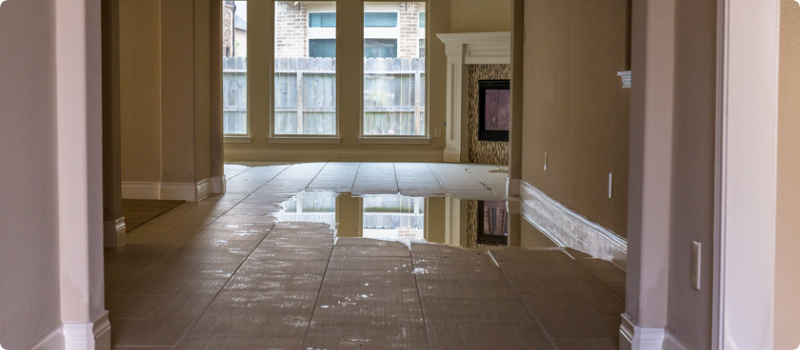What is covered by renters insurance?
Updated April 3, 2024 . AmFam Team
Updated April 3, 2024 . AmFam Team
Renters insurance helps cover your personal property if it’s damaged by a covered event, like theft, fire or a storm — but it’s even more than that. Beyond helping to replace your belongings, renters insurance can help protect your lifestyle. That means being there for you if the unexpected happens, like:
Renters insurance can help. Your policy covers more than just what you own — it helps protect you wherever you go and when accidents happen.
If you’re considering getting renters insurance or you’ve just purchased a new policy, you might be wondering how exactly this proactive coverage protects you from the unexpected. Let us help clear up a few key questions you may have about renters insurance.
[MUSIC PLAYING]
SPEAKER: From your computer to your couch, as a renter, you have a lot more to protect than you think, and renter's insurance is an easy and affordable way to protect your belongings, and it even protects you when you're on the go. The best part, this affordable coverage is often less than two of your favorite fancy coffees a month.
With renter's insurance, you'll have three main types of protection, personal property coverage, liability coverage, and additional living expenses.
Landlords Insurance
If your apartment is damaged from things like fire or water, your landlord's insurance will only cover the building, not your belongings, and if it's broken into, you'll be on the hook for covering the cost to replace any belongings that are stolen. That's where personal property coverage steps in.
Personal Property Coverage
This coverage protects your belongings inside your apartment, and when you're out and about on the go. To determine the amount of personal property coverage you need, add up the cost of your belongings, like a bike, jewelry, and electronics. Your coverage types and limits should be enough to replace your stuff should the unexpected happen.
Liability Coverage
Renter's insurance also offers liability coverage, which provides some protection for medical bills or lost wages if someone is injured in your home, or if you injure someone away from home depending on your coverage limits, the cost to replace or repair damages you cause to another person's property, and legal costs if you're sued by your landlord or someone else for damages you caused to their property. It even covers additional living expenses, like a hotel and food if your apartment is uninhabitable due to a covered loss.
Now that you know how renter's insurance benefits you, connect with an American Family Insurance agent to get a quote and see how simple and affordable it is to protect all the things that matter most to you.
You can be covered by renters insurance if you live in a rental property. This includes an apartment, home or condo.
You and your roommate might share that uncomfortable futon, but your policy won’t provide any coverages for your roommate unless you share a renters policy. Some states allow unrelated roommates to share a renters insurance policy, but keep in mind, if you share a policy, the coverage limit doesn’t increase. So, it’s always a good idea to take a look at the combination of your possessions to figure out if your coverage limit is enough to cover both of you.
The bottom line? Though it’s not recommended, sharing a renters insurance policy with your roommate is a possibility. But, when you have your own renters policy, you’re getting customized coverage that fits your needs. And, since renters insurance is so affordable, it just makes sense to get your own coverage! Get the 411 on roommates and renters insurance.

Renters insurance coverage from American Family Insurance offers three main types of protection: personal property, personal liability and loss of use.
Personal property coverage protects your belongings inside your home and when you’re on the go. If your things are stolen or damaged by a covered loss, this coverage helps you with the costs of replacing your things.
Renters insurance can help replace your belongings if they are unexpectedly damaged by things like theft, the result of a fire, lightning and more. Learn more about how a renter’s insurance policy can protect you from theft.
In fact, not only does renters insurance help cover you in the event of theft from your apartment, but in many instances the coverage extends to protect your belongings while on the go — like at a coffee shop or on a road trip across the country. For instance, if your bike was stolen while you were working at the coffee shop, or your car was broken into and your iPod was taken, renters insurance can protect your things.
Coverage on the go is limited and may not cover 100 percent of losses based on location and other factors. Your agent will help you clarify your limits. Read more about renters insurance coverage that follows you.
It depends on the circumstance. Renters insurance policies do not cover damage caused by floods — you’ll have to purchase flood insurance separately to be covered for damage from flooding — but, you may be covered if there are other types of water damage, like the below scenarios.
Let’s say water is leaking from your ceiling because your neighbor forgot to turn the bathtub off. While your landlord may be concerned about the damages to your apartment, you’ll have to cover any damage it caused to your personal property, like if your laptop was ruined from the water leaking.
On the other hand, if you were the one who let the water overflow in the bathtub and your neighbor’s apartment is damaged, your landlord might file a lawsuit against you to fix the damage. You can file a renters insurance claim to help cover some of the cost. Learn more about renters insurance coverage for water damage.
Yes, renters insurance protects all of your important possessions including your electronics like your computer or TV from damage or theft. Your agent can help you determine the coverage amount you need depending on what kinds of possessions you own. In the meantime, check out the cost of renters Insurance to see what factors affect the price of your policy.

Accidents happen. As a renter, you can be held responsible for injuries to guests or damage to your apartment building. Personal liability coverage could help you pay for property damage, first aid, medical expenses and court costs.
If someone trips and injures themselves on your wet kitchen floor which you’ve just cleaned, the liability coverage portion of your renters policy may help cover costs due to bodily injury and lawsuit related expenses. It can also help pay for your guest’s medical bills, such as ambulance or hospital bills. These costs are only covered up to your coverage limits, so it’s important to review your limits and decide on whether or not you have enough coverage.

Loss of use coverage helps pay for expenses should your home become unlivable due to a covered loss. These increased expenses, comparable to your normal living expenses, can include hotel stays and food.
Not many people are aware that renters insurance will help cover the cost of lodging, including hotels, if you need to make temporary living arrangements due to an unexpected covered event, like fire or storm damage. This is called loss of use coverage (Coverage D) and is typically included in your renters policy.

Typical renters insurance policies do not cover events like:
You may be eligible to purchase additional protection for these events. Click the links above to learn more.
It’s important to have enough renters insurance to cover the costs of replacing your belongings in the event of the unexpected. You can estimate this amount by adding up the value of your personal property.
Head to our Renters and Apartment Resource Hub to find out more about renters insurance and tips for renters. Plus, an American Family Insurance agent is a great resource to use for any other questions you may have about renters insurance. You can also check out these common FAQs about renters insurance to really get savvy about safeguarding your humble abode.
Already an existing American Family customer? Save up to 7% when you bundle your renters and auto policies.*
Gain more peace of mind with renters insurance and get a quote today!
*Customers who bundle their auto and renters insurance may save up to 7% on both policies together (as of December 2024).
This information represents only a brief description of coverages, is not part of your policy, and is not a promise or guarantee of coverage. If there is any conflict between this information and your policy, the provisions of the policy will prevail. Insurance policy terms and conditions may apply. Exclusions may apply to policies, endorsements, or riders. Coverage may vary by state and may be subject to change. Some products are not available in every state. Please read your policy and contact your agent for assistance.